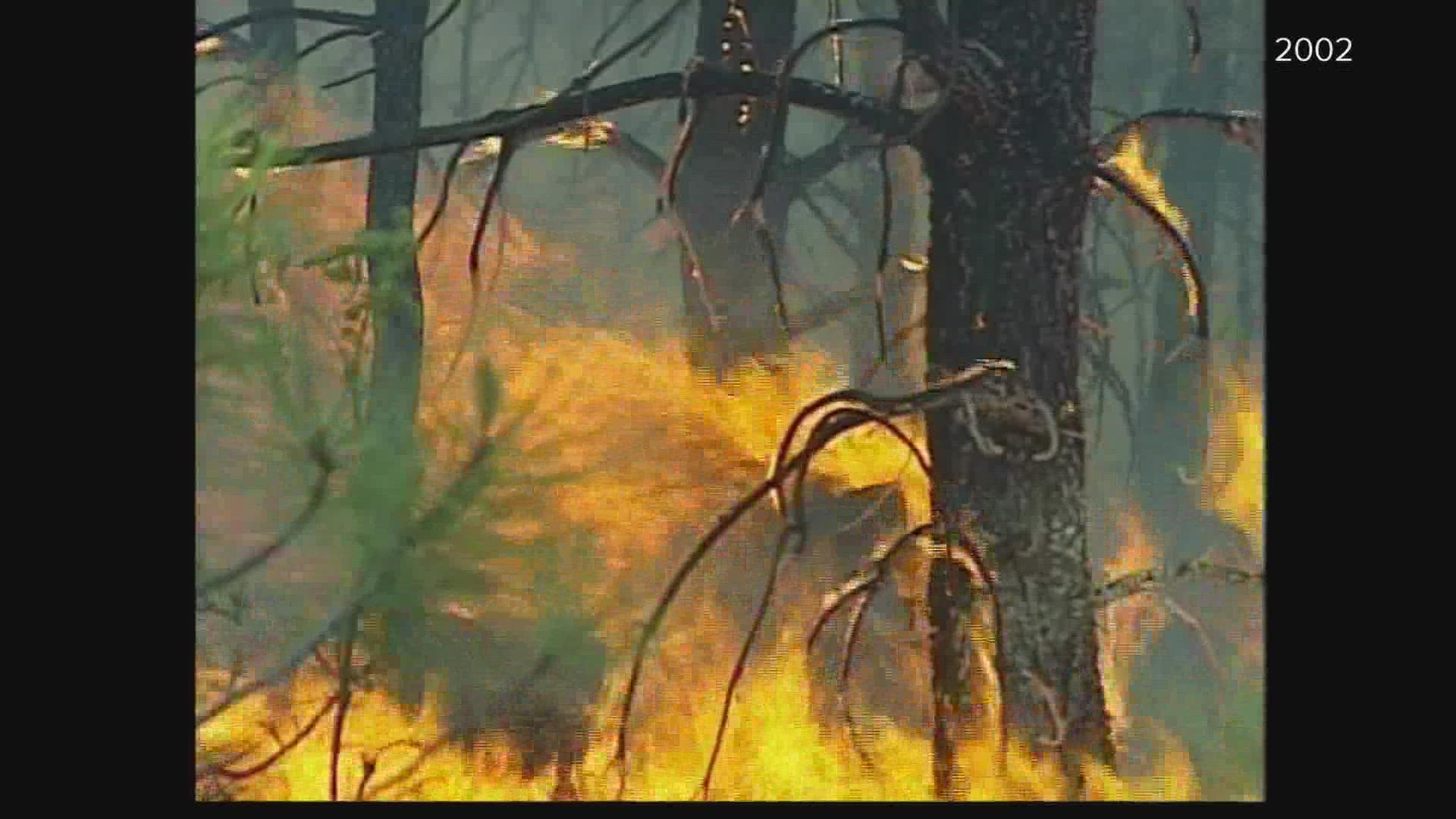HEBER-OVERGAARD, Ariz. — The fire was unrelenting.
"You could see it coming, it was very large," Joyce Schusler said. "It was, like, descending on us."
Schusler was watching from her home in the Bison Ranch area of Heber-Overgaard. As the smoke grew bigger and the fire grew closer, she had no choice but to run.
"It was overwhelming," she said. "I didn't understand a wildfire like I understand it now."
The Rodeo and Chediski Fires merged near Heber-Overgaard into a massive single fire. By the time it was over, it would burn 468,000 acres and destroy more than 300 homes. It would become the most destructive fire in Arizona history in terms of houses burned.
Schusler was evacuated to Payson, along with a lot of people in the Heber-Overgaard area.
One night she overheard an insurance adjuster who had just come back from town.
“I heard him say our address," she said. "So that's how we found out.”
Her home was gone...burned to the ground. Nothing left but a pile of rubble. Schusler didn't even get to sift through what remained before it was cleared away.
Weeks later she and the rest of the homeowners were allowed into town. There were signs that said "Welcome Home" and firefighters welcomed them. But there was no home for Schusler to come back to.
"You're in this to protect property but based on the quantities and volume, you can't do everything," Heber-Overgaard Fire Chief Dee McCluskey said.
At some point during the firefight, fire officials knew they wouldn't be able to save everything They began to cut their losses. Highway 260 was a fire break where they would make a stand. But everything on one side of the highway was written off as a loss.
In the end, the fire break mostly worked. But hundreds of homes were lost.
"Both should've never happened," McCluskey said.
The Rodeo Fire was set intentionally on June 18, 2002, by an out-of-work firefighter named Leonard Gregg. Gregg was arrested and sentenced to 10 years in prison.
The Chediski Fire was started as a signal fire by Valinda Jo Elliott to signal a passing news helicopter. She had been lost in the forest for 3 days. Her signal fire spread and became the Chediski Fire.
At the time, Paul Charlton was the U.S. Attorney for Arizona, in charge of deciding whether to prosecute Elliott. At a packed town hall meeting in a high school gym, Charlton came in person to deliver the news: he would not be charging Elliott.
Homeowners were furious. They stormed out of the gym without waiting for an explanation. One threw a charred piece of log onto the gym floor in front of Charlton. It's a trip he remembers well 20 years later.
"The most difficult decisions are those in which you have to tell people who have been hurt by a wrong that you cannot prosecute a case," Charlton said during a recent interview in Phoenix, where he is no longer a prosecutor.
His legal reasoning was the "necessity defense." Valinda Jo Elliott did what she did to survive being lost in the wilderness. Charlton didn't believe he could win a case against her.
"Lost in the forest for three days in sandals, started a signal fire, told the helicopter crew that picked her up, won't somebody turn or put out that fire?" Charlton said. "That is textbook necessity defense."
But with houses still smoldering, many homeowners didn't want to hear the explanation.
Elliott was eventually sued in tribal court and ordered to pay millions of dollars in restitution.
"After I had time to really think about it and absorb it," Joyce Schusler said from her back porch, "and you can always replace material things. But it is hard to lose a lot of family mementos."
Schusler eventually rebuilt her home in the Bison Ranch neighborhood. Except for a smaller garage, it's exactly the same as the house she lost.
“It was my way of not dealing with things, you know?" she said.
A few weeks after the fire swept through town, Schusler's husband died unexpectedly. She was starting over in every possible way.
"I think I was...I know I was in shock," she said. "And so I was trying to recreate what was there before."
But the original porch at her home used to look out onto the thick ponderosa pine forest. Now, it's miles of empty grassland dotted with a few juniper trees. A completely different landscape than what used to be.
Those trees are gone. They may never come back. But Heber-Overgaard is still here too. The burn scar has grown green with grass and smaller trees. But the town -- and the people -- are forever changed
Arizona Wildfires
Track the latest coverage of the 2022 Arizona Wildfire Season with the current coverage on our 12 News YouTube channel.

